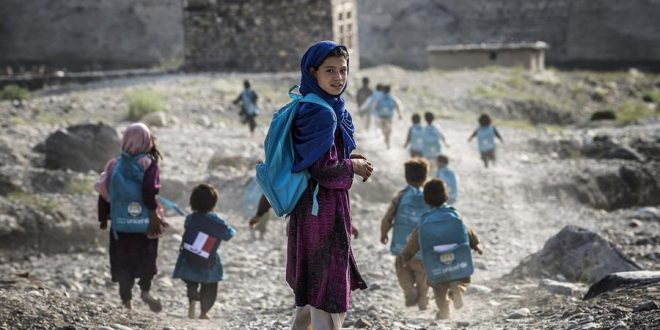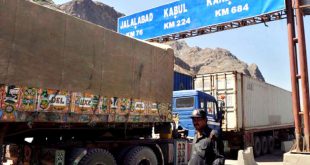Protagonists must protect civilians, end targeting of schools and clinics
AT News
KABUL: The forty-year-old conflict in Afghanistan is having a devastating impact on children and the protagonists are failing in their duty to shield them from its consequences, UNICEF said today (Tuesday).
A report released by the UN children’s agency cites data showing that in the first nine months of 2019, an average of nine children were killed or maimed every day, an 11 percent increase compared to the same period in 2018. A surge in suicide bomb attacks and ground engagements between pro- and anti-government forces was largely to blame.
In the ten years between 2009 and 2018, nearly 6,500 children were killed and almost 15,000 others injured, helping make Afghanistan the world’s most lethal warzone in 2018.
Besides the direct impact of violence, UNICEF says that children’s lives are being blighted by the combined effects of natural disasters, poverty, and under-development.
“Afghan children, their families and communities suffer the horrific outcome of conflict each and every day,” said UNICEF Executive Director, Henrietta Fore. “But right now, civilians, especially children, must be shielded from the impact of conflict.”
Fore called on the various parties to the conflict to fulfil their obligations under international humanitarian and human rights law, which require them to prevent civilian casualties, to end the targeting of schools and health centres, and allow civilians to access humanitarian deliveries and services.
UNICEF says that while long years of bloodshed and turmoil are shaping millions of young lives in Afghanistan, there has been important progress too: the mortality rate among children aged under 5 has been cut by nearly one third since 2008; 96 per cent of the country is polio-free, and the country’s first child rights protection law has been adopted.
According to UNICEF, investment in education is an urgent priority, in order to tackle illiteracy rates that are among the world’s highest, and to provide classrooms and teachers for the estimated 3.7 million school-aged children who are out of school.
Around 400,000 young Afghans enter the labour market each year, but many lack the vocational skills necessary to find jobs and livelihoods.
“Young Afghans need to know that their career prospects extend beyond joining an armed group, or escaping the country to try their luck abroad,” said UNICEF Afghanistan Representative Aboubacar Kampo. “With the right support, they can begin to break free of the cycle of violence and underdevelopment, and create a better future for themselves and Afghanistan.”
UNICEF is working with the authorities and local communities to address a range of negative social norms. Girls are at risk from honour killings, domestic abuse and sexual violence. At least one in three girls marries before her 18th birthday. Boys face recruitment into armed groups, being put into child labour, and comprise a large majority of the casualties from incidents involving discarded munitions (Explosive Remnants of War).
Working through partners, UNICEF is providing treatment to 277,000 severely-malnourished children. But the programme needs to be substantially scaled up if another 300,000 children in need are to be reached.
The children’s agency is increasingly using sustainable gravity-fed and solar-powered water systems to help some of the 2.8 million Afghans affected by a severe drought last year. Even so, only 64 per cent of the population have access to improved drinking water that is protected from outside contamination.
UNICEF is seeking $ 323 million to support its Afghanistan operations in 2020, of which 75 per cent is unfunded.
 Afghanistan Times
Afghanistan Times




